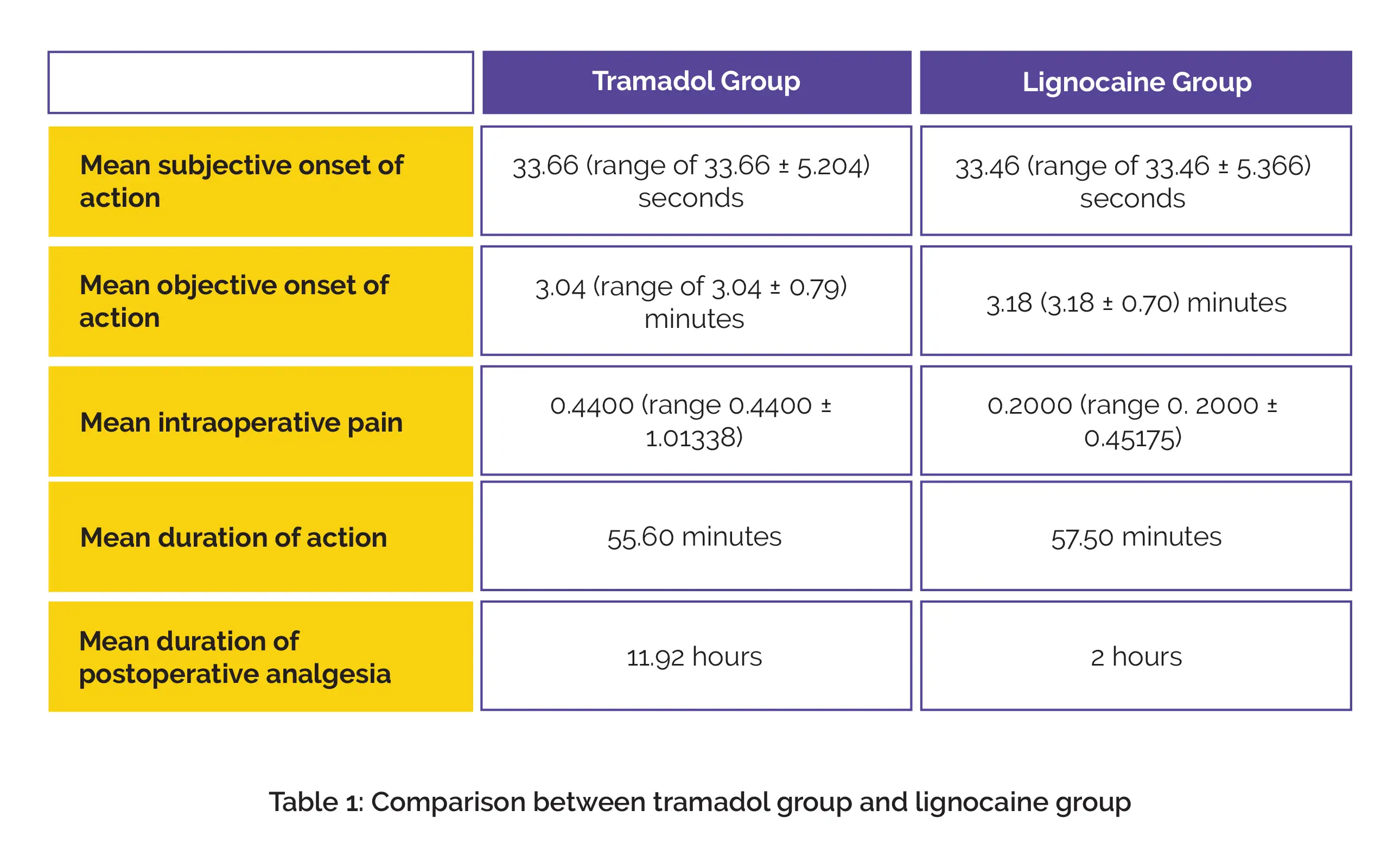Categories
Change Password!
Reset Password!


Tramadol can be used as a valid substitute to lidocaine for performing dental extractions in normal patients or patients allergic to lidocaine.
A comparative study published in The Saudi Dental Journal depicted that in patients undergoing extraction of maxillary third molar teeth, 5% tramadol exhibited local anesthetic effectiveness similar to 2% lignocaine with adrenaline but was reported to be a comparatively weaker agent with weak anesthetic effect. Investigators explored local anesthetic effectiveness of tramadol vs. lignocaine + adrenaline for dental extraction.
Overall, 200 volunteers were randomized into (I) Group A: Administered 0.6 ml of 5% tramadol 0.4 ml buccally and 0.2 ml palatally to extract maxillary fully erupted third molar as local infiltration, (II) Group B: Administered 0.6 ml of 2% lignocaine containing 1: 100,000 adrenaline buccally and 0.2 ml palatally as infiltrations.
Occurrence of allergic reaction, duration of action, intrasurgery pain, onset of action, and postoperative analgesic effect were the parameters evaluated. In terms of mean duration of action, mean subjective onset of action, and mean objective onset of action, no profound inter-group differences were noted. Regarding the mean intraoperative pain, and mean duration of postoperative analgesia, significant inter-group differences were witnessed, as shown in Table 1:

The local anesthetic effectiveness of tramadol was found to be similar to lignocaine with adrenaline. Hence, tramadol can be used as an alternative to lidocaine for infiltration anesthesia in dentistry.
The Saudi Dental Journal
Comparative study of local anesthetic efficacy of 5% tramadol versus 2 % Lignocaine with 1:100,000 adrenaline for extraction of fully erupted maxillary 3rd molars using infiltration anesthesia
Ahtesham Ahmad Qureshi et al.
Comments (0)